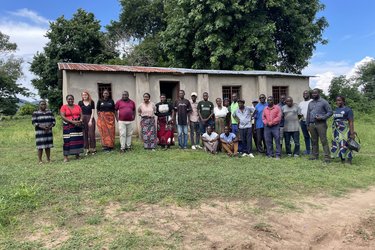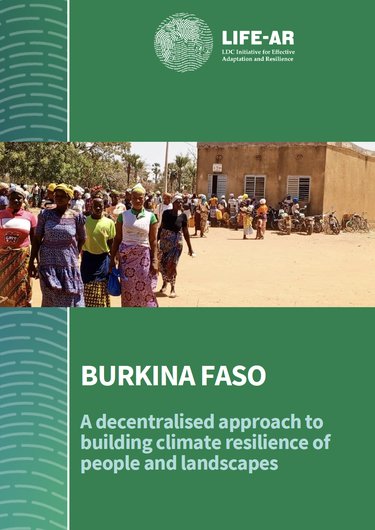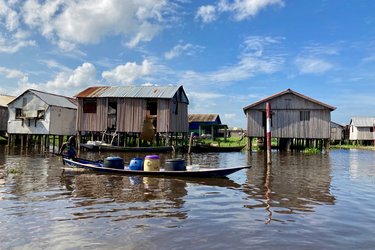
A consultative process
At the core of LIFE-AR is the commitment for 70% of climate finance to support local level. And, as importantly, those funds are to be allocated depending on the needs on the communities. To achieve this goal, in Malawi, the districts of Rumphi, Salima and Mangochi were first selected based on their vulnerability levels, population, geographical balance and number of adaptation and resilience projects being implemented.
Then, the LIFE-AR task team directly engaged communities to brief local stakeholders on LIFE-AR and its objectives. The engagement activities also assessed the communities’ capacity on natural resource and landscape management, to plan for further trainings. Additionally, Participatory Climate Vulnerability Assessment were undertaken in each communities. The analysis facilitated the identification of climate hazard prone areas and formed the basis to determine relevant adaptation measure.
Amongst the key areas highlighted during this process, irrigation, landscape restoration, flood risk and water management, and sustainable livelihoods were retained as priority investments to build resilience in the long term.
Snapshot of selected investments
Expanding irrigation for improved agricultural productivity
Efforts to improve agricultural productivity through irrigation schemes are underway in both Mangochi and Salima. In Mangochi, the rehabilitation of the Ang’ona Irrigation Scheme in Mbwadzulu Area Development Committee (ADC) is a key priority, benefiting the Nsumbi Village Development Committee (VDC). Plans are in the final design phase, with a shift from traditional irrigation canals to piped systems that will reduce water loss and prevent soil erosion. Additionally, a larger water tank is being constructed to ensure a more consistent water supply for farming activities.
Similarly, in Salima, an irrigation scheme has been proposed to boost food production. Locations for the irrigation scheme have been identified, preliminary surveys have been completed, and canal drawings finalized. The next steps include the production of a bill of quantities and the procurement of a contractor to begin construction.
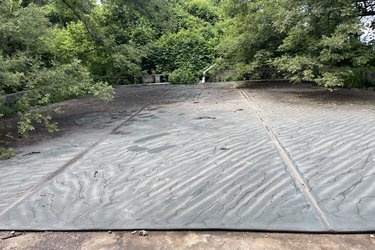
Forestry and landscape restoration for climate resilience
Tree-planting and reforestation efforts are a major focus in both Rumphi and Salima to restore degraded landscapes and strengthen climate resilience. In Rumphi, a reforestation initiative is on track to restore 4,500 hectares of forest using native and fruit trees, with a nursery established to supply 58,000 seedlings. Soil and water conservation efforts are also being implemented, including gully reclamation with check dams, and planting vetiver grass along a 200 meter stretch to stabilize the soil. Additionally, bamboo and reeds will be planted along streams to reduce the risk of flooding.
In Salima, the project has procured and begun planting vetiver grass to control soil erosion, ensuring that agricultural lands remain productive. The project has also distributed mango and banana tree seedlings to 600 households. Communities received training on proper planting techniques, such as hole sizing and manure application. Reforestation efforts will involve tree planting and natural regeneration management of trees. The interventions will use Village Natural Resources Management Committee in the area and a total of 20 village forest areas will be created in all villages.
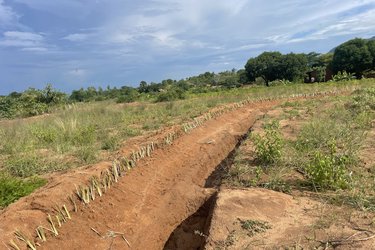
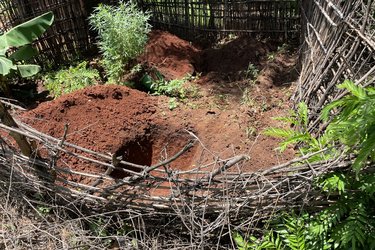
Addressing flooding risks and water management
Flood mitigation efforts are critical in both Rumphi and Salima, where seasonal flooding threatens livelihoods and infrastructure. In Rumphi, efforts to protect farmland include the construction of swales along marker ridges to prevent erosion, while flood damage will be mitigated by construction of a dike along the Bogolo River (work currently in progress). Early warning systems in form of a hydrological station will be installed on the river. In addition to efforts addressing soil erosion and flood damage, water management issues will be addressed through a gravity-fed water supply intake system which is expected to benefit over 3,600 people.
Salima will implement sustainable land and water management by promoting the use soil and water conservation technologies including climate smart agriculture technologies. Projects include for example the construction of box ridges to prevent water runoff to preserve soil quality and ensure water retention for crops. A total of 550 farm families will benefit from these interventions. To address potable water challenges, two high yielding boreholes will be drilled, and solar powered systems will be installed to facilitate pumping of the water into the two tanks. The system will support 500 households with potable water.
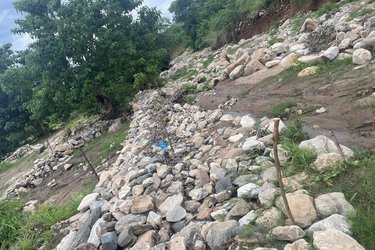
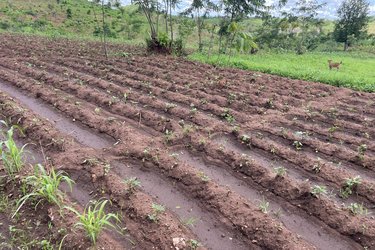
Greenhouse farming and fisheries for sustainable livelihoods
Efforts to improve economic resilience through sustainable farming and fisheries are underway in Salima. Greenhouses will be constructed to support the production of horticultural crops such as tomatoes, green beans, and eggplants, providing local farmers with new income-generating opportunities. Additionally, three fishponds are being consolidated into a larger pond to promote fish mobility and breeding, enhancing food security and livelihoods. Salima district will also undertake economic empowerment activities such as bee keeping, village savings and loans groups. 20 beekeeping clubs of 20 members each (50% women) will be set up and the members will receive trainings, technical support and start-up beekeeping equipment.
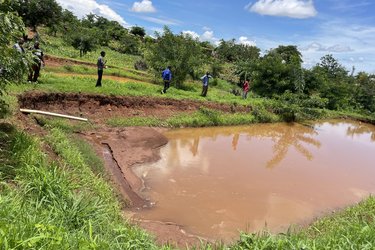
Key takeaways
LIFE-AR is aiming to make a tangible impact in Malawi by strengthening climate resilience through community-driven solutions. Across all districts, local communities are at the forefront of sustainable agricultural practices, landscape restoration, and flood mitigation efforts, leading to improved food security and livelihoods. Capacity-building initiatives are equipping communities with essential skills to sustain these interventions, ensuring long-term benefits. The integration of environmental, social, and economic strategies underscores the initiative’s holistic approach, positioning it as a model for future climate resilience efforts.
Local representatives are already seeing the benefits of the initiative, as in the district of Salime, where official commended the initiative in the media.
As LIFE-AR progresses, it continues to demonstrate the power of collaboration and community-led solutions in adapting to climate challenges and securing a more sustainable future.
